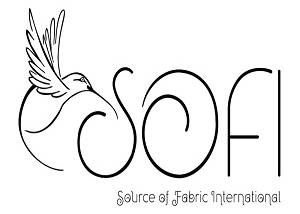The denim fabric has become a staple in wardrobes worldwide, known for its durability, versatility, and timeless appeal. The evolution of denim fabric is a fascinating journey that spans centuries, reflecting cultural shifts, technological advancements, and changing fashion trends. In this article, we will explore the key milestones in the evolution of denim fabric, providing a comprehensive understanding of its rich history and contemporary significance.
The Origins of Denim Fabric
The story of denim fabric begins in the 17th century in the French city of Nîmes, from which the name “denim” is derived (“de Nîmes” meaning “from Nîmes”). Initially, this sturdy fabric was used for workwear due to its durability. The fabric was made from a blend of wool and cotton, which was later adapted to pure cotton.
1. Denim Crosses the Atlantic
In the late 18th century, denim fabric made its way to America, where it gained popularity among workers for its strength and practicality. It was particularly favored by miners and laborers during the Gold Rush era. The iconic blue color of denim comes from indigo dye, which was chosen for its ability to mask dirt and stains, making the fabric even more suitable for rough work environments.
2. The Birth of Blue Jeans
The most significant milestone in the evolution of denim fabric occurred in 1873 when Levi Strauss and Jacob Davis patented the first pair of blue jeans. They added metal rivets to reinforce the points of strain, creating a durable pair of pants that could withstand the rigors of manual labor. This innovation marked the beginning of denim’s association with jeans, a garment that would go on to become a global fashion phenomenon.
3. Denim in Pop Culture
Denim fabric transcended its utilitarian roots in the mid-20th century, becoming a symbol of rebellion and youth culture. Hollywood played a significant role in this transformation, with stars like James Dean and Marlon Brando popularizing jeans in the 1950s. Denim became synonymous with the rebellious spirit of the time, and its popularity soared among teenagers and young adults.
4. The Rise of Designer Denim
In the 1970s and 1980s, denim fabric entered the high fashion world. Designers began experimenting with different cuts, styles, and washes, elevating denim to a new level of sophistication. Brands like Calvin Klein and Gloria Vanderbilt introduced designer jeans, which became status symbols and fashion statements. This era marked the beginning of the diversification of denim, with various styles catering to different tastes and preferences.
5. Sustainable Denim
In recent years, the evolution of denim fabric has taken a turn towards sustainability. The fashion industry has been under scrutiny for its environmental impact, and denim production is no exception. Innovations in sustainable practices include using organic cotton, water-saving dyeing techniques, and recycling old denim into new products. Brands are increasingly adopting eco-friendly methods to produce denim, reflecting a growing consumer demand for responsible fashion.
The Modern Appeal of Denim
Today, denim fabric is a versatile material used in a wide range of clothing items, from jeans and jackets to skirts and dresses. Its enduring appeal lies in its adaptability and ability to evolve with changing fashion trends. Denim continues to be a canvas for innovation, with designers constantly finding new ways to reinterpret this classic fabric. Read More About A Beginner’s Guide to Understanding Fabric Composition.
Conclusion
Denim’s evolution is evidence of its continued appeal and adaptability. From its humble beginnings in Nîmes to its current status as a fashion staple, denim has undergone significant transformations, each marking a milestone in its journey. Whether you’re wearing a classic pair of blue jeans or a modern denim jacket, you’re participating in a centuries-old tradition that continues to shape the world of fashion. For more insights into fabric services, including Fabric Printing, Finishing, Laundry, Dyeing Services, Sourcing Services, and Production Services, visit SOFI.


